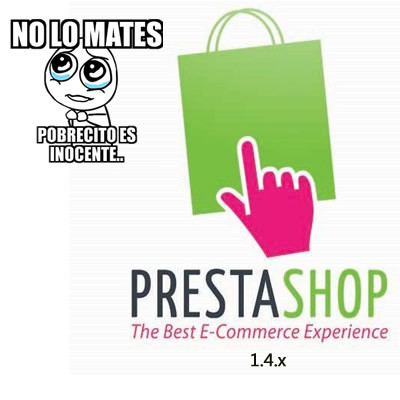Google Shopping: Keys to measure and optimize your campaigns

One of the most profitable and competitive ways of selling our products is through Google Shopping campaigns.
Google Shopping campaigns require some technical knowledge somewhat larger than the rest of campaigns since they entail the implementation and configuration of the product data Feed and it is essential that this is properly configured and optimized.
In the next post we will explain some of the basic keys to have a properly configured and optimized Google Shopping campaign as well as some of the strategies that you can implement in order to increase the sales of your business.
1-detection Data Feed
Product ads are generated from data sent through Google Merchant center, it is therefore essential that the feed of data that is sent is more refined as possible. The Diagnosis tab Google Merchant Center will help you to check the status of your catalog items, whether they are active or contain errors and show you the status of the products, which are approved, not approved or pending review.

From the tab Elementswhich you will find a little further down, you can check the errors generated, products and the % of affected clicks. This last piece of information is very important since it evaluates the clickthrough rate that you are losing with the incidence of product. Sometimes the number of products with errors is not very high, but it affects a high percentage of clicks lost so it is important to periodically review the diagnosis. You can also download the report to analyze in detail the problems and solve them.

You can access the Google Help Center by clicking on this link:Access to Google feeds debugger support.
2 the Data Feed optimization
It is essential, therefore, to have a Data Feed optimized. To do this they should take into account the following aspects:

1 titles they serve them to related searches of the users system by which all work optimization on them will help to generate more impressions and that these will be in a better position.
Titles must have sense, must contain key words and must be unique for each product. It is important to also take into account the number of characters that will be displayed (in the google search box 20 characters), by what must be placed at the beginning of the description the most relevant information. It is highly recommended that the brand name go to the beginning of the description.
2. descriptionsthe best descriptions we have highest quality and relevance will have advertisement and therefore less will cost us more generate impressions since the system tends to show those items that are of greater relevance.
It is recommended, therefore, try to avoid generic descriptions and include in them, the search terms that our users often us find, always preserving the meaning of the description.
A recommendation would be the take out the Adwords search terms report that it will help us to generate ideas on keywords that you can include in our descriptions. You can also help the tool of Key words Planner AdWords to see the search terms usual and incorporate these terms in the descriptions of your items and thereby get to increase the number of impressions.
Since the amount of products that often have the data feed is very extensive, can try to do a test with a set of the best products following these best practices. Put them in a separate group, assigning the competitive cpc and check its performance. If this is correct to go gradually joining the rest of our feed products.
3. type of product include the attribute Product Type to make your own structure of products according to the structure of your web page. This allows you to structure subsequently better adwords campaigns already added higher level of detail and allows us to play with different strategies of CPC by type of product.

4. use of custom tags. These tags allow you to grouping products that do not belong to the same category but that can be defined by other criteria such as new products, promotion, high margin, low margin products...
Using custom tags It allows you to make different bid strategies Depending on the defined label, this way if there is a series of products that are typically sold in the Christmas campaign, you can define them tagged "Christmas" and work with them in a differentiated way.
5 columns [sale_price] and [sale_price_effective_date] These columns include the price of the discounted items and the dates in which the offer is in force and avoid ads are rejected by differences in the price of the items.
3 optimizing Shopping campaigns
After review and optimization of the Data Feed the next step to be carried out to ensure that our campaign is well optimized is analyze and measure the results of campaigns and make strategies to get as many sales as possible.
You are a series of recommended steps:
1. analysis and measurement. Previous optimization we do a comprehensive analysis of the State of the campaign and its performance, therefore we can access the tab dimensions and analyze sales, impressions or clicks that are generated by category, product type, brand name... etc.
This tool, along with Google Analytics will allow you to have a global vision of the articles or categories that generate higher conversion and be able to guide different bid and campaign strategies.

You can identify the products that are most sold and create for them a campaign apart with an independent budget and different bids.
2. add negative keywords as in the rest of campaigns is essential to make a good analysis of the search terms that have generated the impressions of ads and add less relevant searches as negative keywords.
3. define strategies based on the different objectives -It is very important, in order to define different campaign strategies, set targets that will be determined by the type of product and our competitive advantage and around that strategy defining different structures of campaign.
A series of questions that help us to defining this strategy would be to define:
* Products that generate more and less revenue.
* Products with a high seasonality.
* Products with greater and lesser margin
* Competitive advantage with our competitors.
* Etc...
4. establish several campaigns according to the plotted strategies.
Between different campaign strategies that can be very interesting is the create a campaign base all products inventory. Then create a new campaign for the products to more revenue generate and which must be previously tagged with custom tags listed above. This campaign must have a higher budget and higher bids.
Create a campaign with products segmented on the basis of promotions or seasonal products.
It is very important, if you have several types of campaigns of Google Shopping, which define different priorities for them.
Campaign priority is the way that we tell Google where the same product is included in several campaigns, which is that we prefer to show first. This way a campaign with high priority will show products rather than one of medium or low priority even if the latter has higher bids.
Following this approach, for Hood base we should set a medium or low priority depending on what suits us. Campaign for top sales should define a medium or high priority (always above the general) and for the seasonal product campaign or promotion (which will be activating or deactivating needs) a high priority.
The definition of priorities of campaign is done from the configuration by clicking the campaign priority option.

Outline of structure of campaigns

Sure with these tips and your extensive knowledge of the product, you get to do your Shopping campaigns more profitable and competitive. Don't miss our upcoming publications.













Escribe un comentario